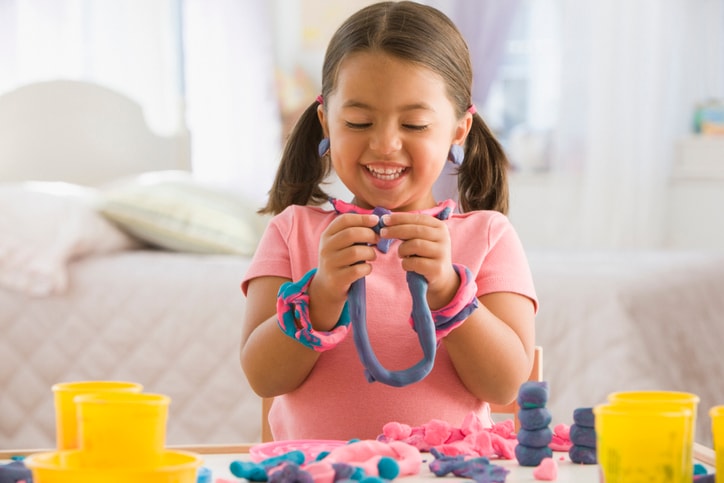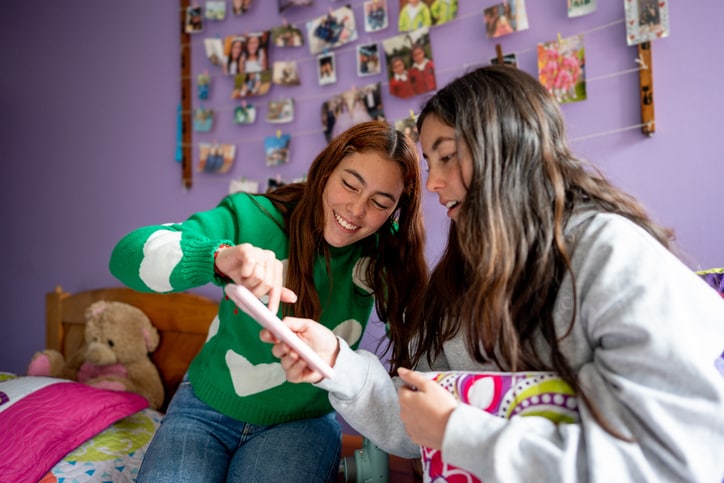Feeling nervous about change is normal at any age, and a particularly nerve-wracking time for kids is, of course, kicking off a new academic year. “As we move closer to the end of summer, students are going back to school, and many of them are feeling anxious,” says Dr. Erika J. Vivyan, a licensed psychologist practicing in Austin, Texas.
Vivyan says that providing children with as much information as possible regarding their classroom, teacher and schedule can help quell these concerns. Validating your child’s feelings by letting them know it’s normal to feel a bit nervous before a new school year can also open the door for them to express their feelings.
Additionally, keeping kids engaged and active in the weeks leading up to the first day of school can be a fun way to dispel nervousness and manage the big feelings they’re dealing with before their big first day.
Here is a list of expert-backed activities to help calm back-to-school jitters.
“Reminding children to slow their breathing and use all of their lung capacity can help them use these skills when they are worried about something.”
—Jessican Myszak, child psychologist
1. Blow bubbles
Why it works:
“Slow, deep breaths are a great way to ease anxiety and taking big deep breaths and slowly releasing them is easy to see when you are blowing bubbles,” says Jessica Myszak, a doctor of psychology and child psychologist based in Illinois.
How to do it:
“Buy or make your own bubble liquid and challenge one another to see who can make the biggest bubbles using their breath,” says Myszak. “Reminding children to slow their breathing and use all of their lung capacity can help them use these skills when they are worried about something.”
2. Play a card game
Why it works:
For Carolyn Truett, a mom of three based in Greenville, South Carolina, playing card games has helped her kindergartner feel less anxious before the start of a new year. “It helps him focus on something other than his nerves,” she says.
Card games can also help activate memory skills and allow kids to practice staying focused before the start of a new year.
How to do it:
Truett says matching games “Go Fish” and “Uno” have been favorites among her children. Try hosting a quick card game before school starts or after dinner to get the whole family involved.
3. Present a research project
Why it works:
If you think that a research project doesn’t sound like a fun activity, Kathleen Fletcher, a mom and former teacher based in Virginia, says encouraging kids to create a presentation for the whole family on a topic they’re interested in can be a fun way to reconnect with the process of learning — leaving them feeling more prepared for the year to come.
How to do it:
Have kids present their findings to you the day before school starts, she advises. “This gives them a chance to get their brain working again and to express their creative freedom,” she notes. If you have more than one child, making a night out of it with refreshments, popcorn and a stage can put an exciting spin on it.
“When you squeeze and manipulate play dough, it naturally helps release the anxiety and tension we hold in our bodies.”
— Kristen Miller, director of education
4. Make homemade play dough
Why it works:
Making play dough together can be fun and engaging for parents and kids. According to Kristen Miller, a director of education at Celebree, it also has anxiety-relieving benefits. “When you squeeze and manipulate play dough, it naturally helps release the anxiety and tension we hold in our bodies,” she explains. Adding a drop of lavender oil provides calming benefits as well.
How to do it:
Have your child help pour the ingredients and stir and ask them to help drop in the lavender oil. Store in an air-tight container.
Homemade Play dough Recipe
- 1 cup flour
- ¼ cup table salt
- 1 teaspoon of cream of tartar
- ½ tablespoon vegetable oil
- ½ cup of hot water
- Lavender oil
5. Schedule play dates
Why it works:
“A major part of a child’s nervousness that comes with going back to school is them being afraid of not knowing anyone or having many friends,” says Rachel Eddins, a licensed therapist practicing in Houston, Texas. “It can happen that your child doesn’t see their school friend(s) all summer, which can make it tough to get reacquainted once school starts.”
How to do it:
Reach out to the parents your child is friends with and see if they’d like to take turns alternating play dates leading up to the school year. Playdates can include a visit to the classroom, playground and/or building, which can help familiarize your child with a new environment, easing any anxiety they might have, says Lauren Starnes, a doctor of education and senior vice president and chief academic officer for Goddard Schools, who adds “the less formal, the better!”
6. Take a walk
Why it works:
“Exercise is beneficial for the mind, body, and spirit and sometimes the best thing we can give a child is our time and attention,” says Miller.
How to do it:
Add an extra fun element by turning your walk into a scavenger hunt. “Decide on the items you may encounter on your walk and see how many you can find,” says Miller. For younger children, keep it to simple items like stop signs and mailboxes. For older children, make it more challenging with harder-to-spot items like garden gnomes or door wreaths.
7. Write with sidewalk chalk
Why it works:
For Jenn Kropf, a writer and mom of three, writing down positive affirmations with children has helped with back-to-school nerves. “Getting them excited is a big part of calming their jitters.”
How to do it:
Sidewalk chalk and post-it notes both work well,” says Kropf. “We keep the wording simple too. ‘It’s going to be a great year!’ is all you really need.”
8. Create a calming jar
Why it works:
“These jars serve as a mindful tool that helps a child focus their attention and calm their breath,” Miller explains.
How to do it:
Place a half a cup of water in the jar and pour in the glue and glitter. Fill the jar the rest of the way with water, and hot glue the lid on the jar.
Calming jar ingredients
- 16-ounce glass jar with lid
- 1/2 cup clear glue
- Distilled water
- Hot glue gun
- 2 tablespoons chunky glitter
9. Buy, make or find a matching back-to-school object
Why it works:
Kropf suggests finding a matching item that you and your child each hold on to on their first day of school. “It helps the kids feel connected to me even when I’m not there,” she says.
How to do it:
Kropf says she and her son have done this with rocks. And for her daughter, they each buy matching bracelets. The item can be whatever you and your child prefer, as long as you both hold on to it during the day!
10. Seek professional help if needed
Back-to-school jitters are completely normal for children to experience at any age. But if your child’s anxiety becomes too difficult to manage on your own, don’t be afraid to seek help.
“If your child is struggling with big emotions this time of year, it’s never a bad idea to sit down with a mental health professional and talk about how we can help,” says Vivyan. “Look for a specialist who uses cognitive-behavioral therapy (CBT) and exposure and response prevention (ERP) to help manage anxiety.”



